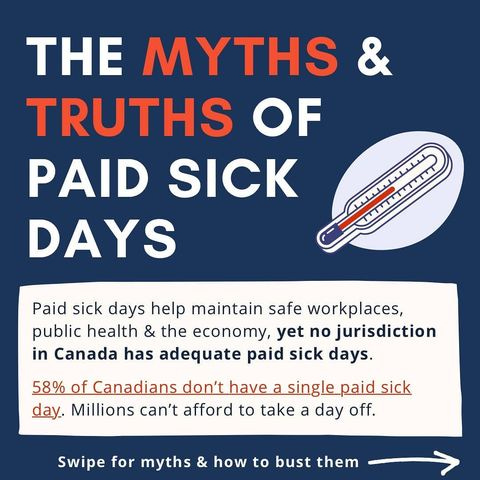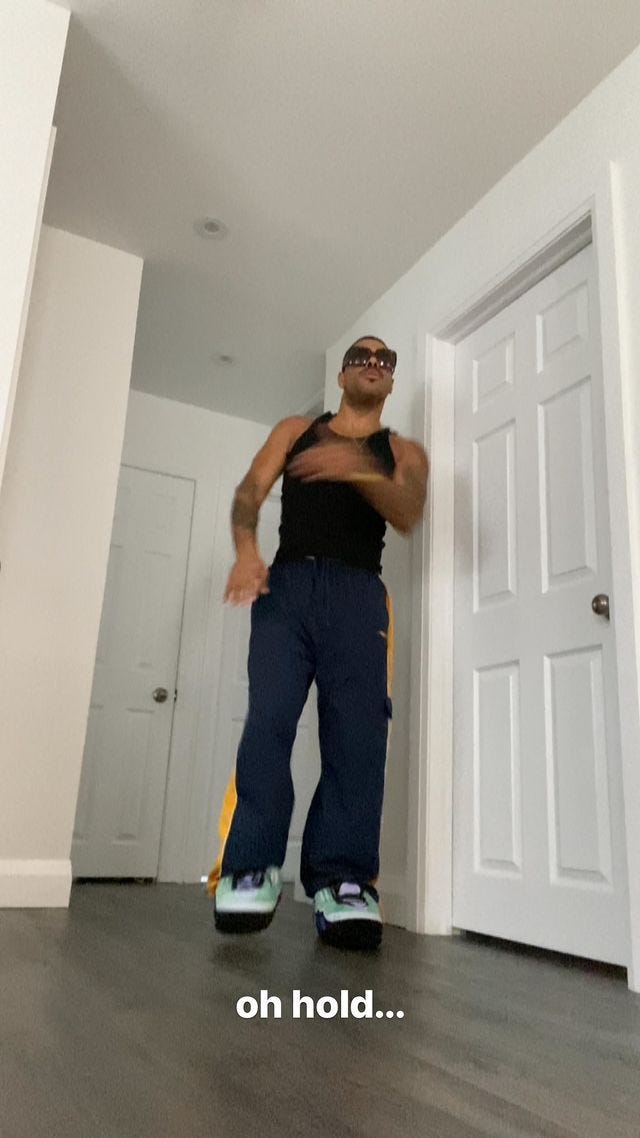You know the saying, There is no way out but through?
When I listen to the news these days, this is how I feel.
Handy reference to everyday feelings guide:
Wouldn’t you rather:
What we need
This week, Ontario declared a second state of emergency and stay-at-home order.
The Ontario government refuses to enact policies that would truly help people stay at home, such as paid sick days, yet keeps making demands of individuals without supporting them. It’s unconscionable.
If these things make you angry every day, me too. But take care of yourself so you can take care of others. Holding your anger in isn’t good for your health.
Watching this on repeat so this can be me next time I’m on hold
The Ontario stay home order restricts movement for people, saying they cannot leave home except for 33 essential reasons, one of them being exercise.
It’s survival time. And exercise is a part of that.
Last week, I wrote about a choice for our family when it comes to virtual school.
This week’s letter is about a personal choice I made, just for me, a few years ago.
The body keeps the score
When my family experienced a serious car accident in 2017, I learned a lot about coping with trauma and stress. It was a lesson in how I could use my body to get a grip on my mind.
My husband, his mother and our two little kids were in the car. I wasn’t there. My own body was intact so I was fine, I thought.
Well, my body started to give me signs: “Oh, you think you’re just going to KEEP GOING, do you? As if things are NORMAL?”
Near-death had suddenly made itself present in my life.
Looking back, I had classic symptoms of stress and trauma. They included irritability and sensitivity to sound, shaking and panic reactions to trigger activities like riding my bike in traffic. Even soldiering on with my daily activities as if nothing bad happened can be a classic trauma response, I later learned.
Our internal panic buttons evolved to be life-saving tools but they aren’t just a simple switch. Sometimes they can get stuck.
And if you don’t stop to process your mental load, your body will have something to say about that.
When I developed a black spot in my vision, it was my genius eye doctor who flagged that I was experiencing an overload of stress. He scanned my eyeball and found a big bulge on the back, pressing on my retina. My eyeball bubble was caused by a spike in cortisol, the stress hormone.
The doctor told me this condition usually clears itself up over time although there was a small chance I could experience permanent vision loss. He sent me home with the direction to “try to relax” (but...you just said...I might go blind...oh, never mind).
At the time, I was processing a few things:
While I wasn’t physically hurt and my family was on the mend, I experienced the shock of how close death is for everyone I love
Sensing danger, my body had fight-or-flight reactions. Panic isn’t a sign of weakness or strength. It’s how our species has evolved over time to keep us alive (so don’t go judging yourself!)
My therapist (I’ve learned so much in therapy) listens to me say many, many words per hour and responded one day with two magical words of her own: vicarious trauma. Say it together now!
Any of the above sound like keeping up on news?
Staying informed in a pandemic means our minds are in overdrive. Everyday actions have life and death hanging in the balance. Should I go to the grocery store? Did my neighbour just stand too close to me? What is essential?
This isn’t a normal level of stress and your body is feeling that.
But I, previously a lounging Garfield-type, learned I could also use my body to reverse that stress.
Back when my eyeball was ballooning, I tried to exchange the cortisol in my body with endorphins (my extremely non-science way of picturing what was happening with me).
I started to move. A lot. I swam laps every day, but the cherry on my week was a regular dance class.
The dance lesson
My dance teacher, Diana Reyes, is cool, beautiful, funny, charming and responsible for introducing me to basically every major Cardi B and Drake song (thank you!).
Every class, in between shouting, “5, 6, 7, 8!” she would drop gems I thought about all week. Just a few words at a time, like an oracle.
“Don’t judge yourself. Be free. Do it in your own style.”
It’s no wonder dance figured so largely during the first lockdown last year. When life is complicated, the body keeps the score (“The Body Keeps the Score” is the name of an influential text on PTSD by Bessel van der Kolk.
Now that we’re back in isolation mode again, whether you’re already a dancer or not, let me be the tipsy lady at the wedding reception pulling you out onto the dance floor.
Diana and I connected over Zoom this week as I’m now lucky enough to count her as a friend.
I asked her if she has a philosophy on how movement can help you work out your feelings.
That aspect of having to be present, having to pay attention, having to get rid of everything else that is plaguing you mentally, is so helpful,” she said. “It’s instrumental to healing because we're just like, in our homes, in our heads, we're on the screen, and all of that is unhealthy to do 24/ 7.
Exactly!
I experienced a ton of learning in Diana’s class, but it’s not the moves I’m taking away. It was everything around the dancing — the reminders to be free, try it again, just move, enjoy it while it lasts. On my little patch of studio floor between other dancers, I learned to get unstuck. And I’m so grateful for that.
Mental health is health and movement can help in so many ways.
This pandemic is hard, even if you are physically isolated (in fact, especially when you’re physically isolated). Don’t blame your body for panicking, instead, use it to bring yourself a few sweaty moments of peace and joy.
And to all the generous folks who responded last week to my newsletter on working and schooling at home, I hear you! Thanks, especially, to the teachers and the parents who opened up.
As for taking my own dance advice, most days my 6-year-old and I will grab each other, one hand on the waist, the other side hand-in-hand, and crank a Disney tune to dance like we’re parents at a wedding.
If you’re dancing it out, too, let me know by hitting the heart below.
Stay safe and thank you for reading,
Hannah
💃💃💃 This newsletter is edited by Ishani Nath 💃💃💃
FURTHER READING
On paid sick leave:
“Appeals to personal responsibility are empty and hollow and ineffective when low-income workers have to choose between following health guidelines and paying their rent or putting food on their tables.” — Gil McGowan, president of the Alberta Federation of Labour, as quoted in the story below.
She was a ‘health-care hero’ for 45 years before COVID. Now they’re fundraising for her funeral, Toronto Star
As Canada battles rising COVID-19 cases, lack of sick leave fuels transmission, Reuters
On dance and joy:
Artist, teacher, DJ, dancer Diana Reyes, Fly Lady Di on Instagram
How Toronto’s Donté Colley became a star by creating the most heartwarming content on the internet, The Toronto Star
BTS Performs "Dynamite" | 2020 MTV VMAs. I’m BTS Army now. I love the light, frothy feeling of this choreography
Royal Family | FRONTROW | World of Dance Los Angeles 2015 The video that made me fall in forever-love with choreographer Parris Goebel
Choosing music over meds, one man's quest to retrain his brain to overcome dystonia, The Globe and Mail. Reading about the benefits between dance and the brain, I stumbled on an interview I did years ago with Federico Bitti, a lovely person I continue to be inspired by.
On mental health, trauma and Covid:
Canadians reporting more anxiety and depression than ever before, poll finds, CTV News
Do Some Trauma Survivors Cope by Overworking? The Atlantic
Trauma resources from CAMH, Centre for Addiction and Mental Health
“Do what you love. Almost any form of exercise or movement can increase your fitness level while decreasing your stress. The most important thing is to pick an activity that you enjoy.” — Exercise and stress: Get moving to manage stress, Mayo Clinic
GIF credit: Sylvan Esso












Your personal story about the eye is why I loved reading this so much!
Yes! Movement is the best way to get out the bad energy and stress. It's amazing how it can change tour mindset. Thanks for sharing Hannah!